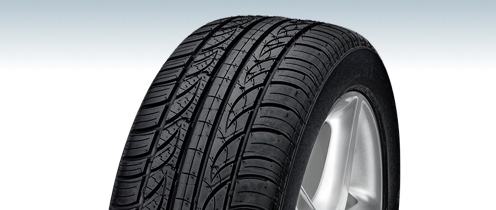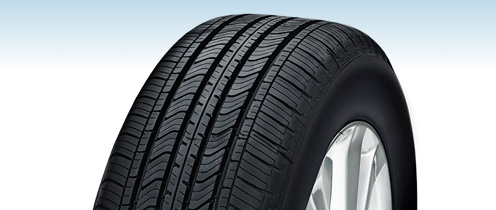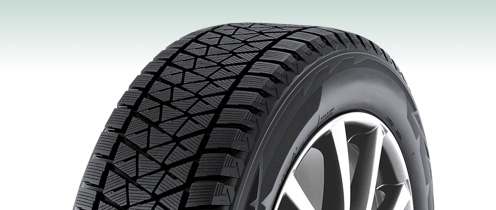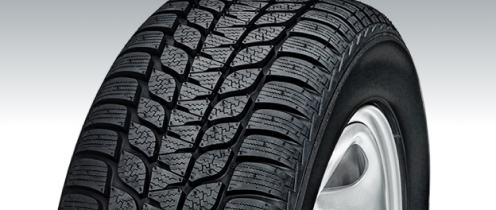Tire Centre

Tire Centre
Tire Care & Maintenance

Tire Pressure
Maintaining optimum tire pressure helps to keep your vehicle running smoothly and safely. Properly inflated tires can:
- Prevent excessive tread wear and extend the life of your tires
- Enhance handling, traction, and the stopping ability of your vehicle
- Improve fuel economy by reducing friction, and in turn, lower emissions
Some Toyota vehicles are equipped with a Tire Pressure Monitoring System that can alert you to the need to stop and check your tires.

Tire Rotation
Front tires generally wear faster than rear tires, which makes tire rotation an important part of regular tire care.
- Ensures more even wear
- Extends the life of your tires
- Improves braking and handling performance
Tires should be rotated as recommended by your Toyota vehicle maintenance schedule.

Tread Wear
As you drive, tire tread gradually wears away, which impacts both traction and braking time.
A simple way to check your tire tread is to insert a quarter into one of the grooves. If you can see the tip of the caribou’s nose, then you many need new tires.
Your Toyota Technician can check and record tire tread depth, and examine tires for damage or wear to better determine if new tires are needed.

Tire Storage
Many Toyota dealers offer the convenience of storage for your winter and summer tires — so that your tires are right at hand when tire changeover season begins.
Wheel Alignment
Wheel alignment involves an adjustment of your Toyota’s suspension system so the tires meet the road at the proper angle for your vehicle. Benefits include:
- A smoother ride
- Helps your tires perform properly and last longer
- Improves handling and keeps your vehicle from pulling in one direction
Misaligned wheels can also cause suspension issues, and an increase in fuel consumption.
Wheel alignment should be routinely checked at least once a year. If you notice wear on the inside or outside edges of your tires, or if your vehicle is shaking or vibrating, make a service appointment today.
Tire Selection & Sizing
Different needs, different tires. Read below to find out which type of tire is the best for you.
Summer Tires

Advantage: Ultimate Grip and handling, with best wet/dry compromise
Disadvantage: Not designed for cold weather – not a Winter Tire
Temperature: Performs well in temperatures above 15°C
Weather: Warm, drey, wet
All Weather Tires

Advantage: Great traction and performance across wide range conditions
Disadvantage: Reduced performance in harsh winter conditions. Increased wear in warmer conditions
Temperature: Performs well in temperatures above -10°C
Weather: All weather conditions
All Season Tires

Advantage: Great all-around tire performance
Disadvantage: Reduced performance below 7°C
Temperature: Performs well in temperatures above 7°C
Weather: All weather conditions
Winter Tires

Advantage: Shortest stopping distance in winter. Superior handling on wet, icy, or snowy roads
Disadvantage: Increased tire wear. Reduced performance above 10°C
Temperature: Performs well in temperatures below 7°C
Weather: All cold weather conditions

